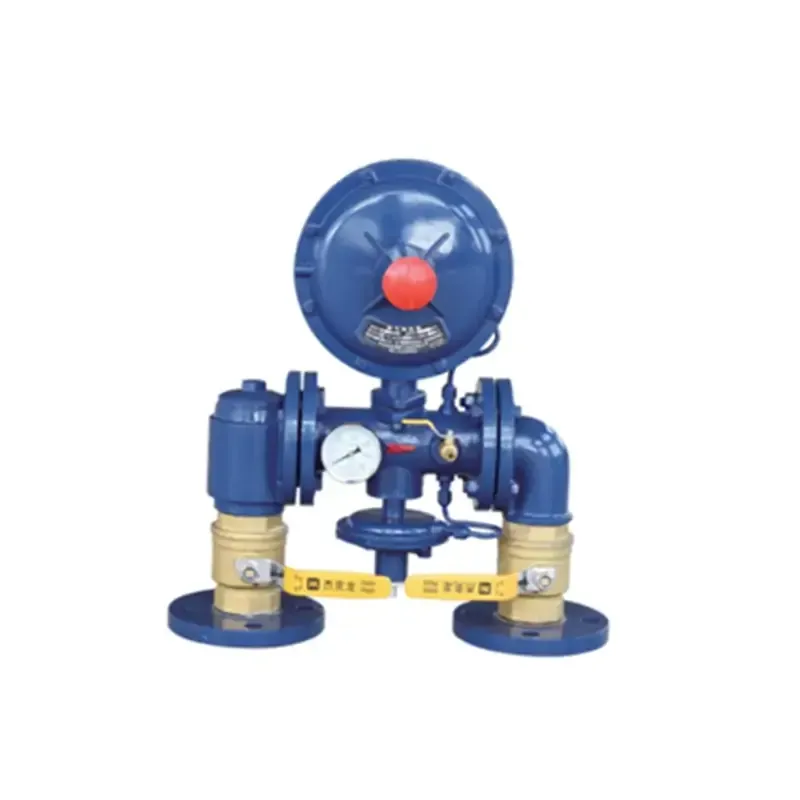
Dec . 13, 2024 08:49
Back to list
gas regulator
Understanding Gas Regulators Ensuring Safe and Efficient Gas Supply
Gas regulators play a crucial role in the safe and efficient delivery of gas for cooking, heating, and various industrial applications. These devices are designed to control the pressure and flow of gas, ensuring that it is delivered at the appropriate levels for different appliances and systems. Understanding gas regulators is essential for anyone working with gas systems, as they help prevent accidents and ensure optimal performance.
What is a Gas Regulator?
A gas regulator is a mechanical device that reduces the pressure of gas from a high-pressure source, such as a gas cylinder or pipeline, to a lower, manageable level that is suitable for use with appliances. By maintaining consistent pressure, gas regulators help to prevent fluctuations that could damage equipment or pose safety hazards. They are commonly used in residential, commercial, and industrial settings where gas is utilized for heating or cooking.
Types of Gas Regulators
There are several types of gas regulators, each serving specific purposes based on the application and type of gas being used
. The most common types include1. Single-stage regulators These are typically used for low-pressure applications where the inlet pressure does not vary significantly. They provide a simple and cost-effective solution for home appliances.
2. Two-stage regulators Commonly found in industrial settings, these regulators are designed for more variable inlet pressures. The two-stage process reduces the gas pressure in two distinct steps, providing more stable output pressure and improved performance.
3. Automatic regulators These sophisticated devices automatically adjust the pressure based on the demand of the connected appliances. They are ideal for systems with fluctuating gas usage, ensuring a consistent flow and pressure at all times.
gas regulator

Importance of Gas Regulators
Gas regulators serve several critical functions
- Safety By regulating gas pressure, these devices help prevent leaks and explosions, which can occur if gas is delivered at too high a pressure.
- Efficiency Proper regulation of gas ensures that appliances operate within their specified range, enhancing efficiency and prolonging equipment life.
- Compliance Many regions have regulations and standards concerning gas installations. Using approved gas regulators ensures compliance with local laws, promoting safety and accountability.
Maintenance and Inspection
Regular maintenance of gas regulators is essential to ensure their proper functioning. Users should inspect regulators periodically for signs of wear, damage, or corrosion. Additionally, it is advisable to check the connections and fittings to prevent gas leaks. Professional inspections should be conducted as recommended or when any changes are made to the gas system.
Conclusion
In conclusion, gas regulators are indispensable components of any gas distribution system, ensuring safe, efficient, and reliable gas supply for various applications. Understanding their function, types, and importance is crucial for anyone involved in gas installation, maintenance, or usage. By properly selecting, installing, and maintaining gas regulators, users can enhance safety and performance, ensuring that their gas appliances operate smoothly and effectively. As gas systems continue to be widely used across homes and industries, the significance of gas regulators in promoting safety and efficiency cannot be overstated.
Latest news
-
Safety Valve Spring-Loaded Design Overpressure ProtectionNewsJul.25,2025
-
Precision Voltage Regulator AC5 Accuracy Grade PerformanceNewsJul.25,2025
-
Natural Gas Pressure Regulating Skid Industrial Pipeline ApplicationsNewsJul.25,2025
-
Natural Gas Filter Stainless Steel Mesh Element DesignNewsJul.25,2025
-
Gas Pressure Regulator Valve Direct-Acting Spring-Loaded DesignNewsJul.25,2025
-
Decompression Equipment Multi-Stage Heat Exchange System DesignNewsJul.25,2025

